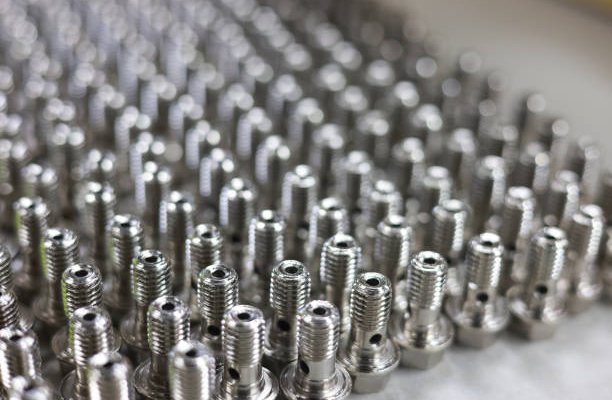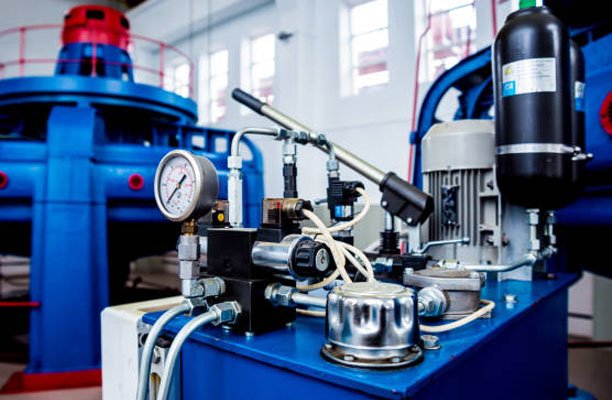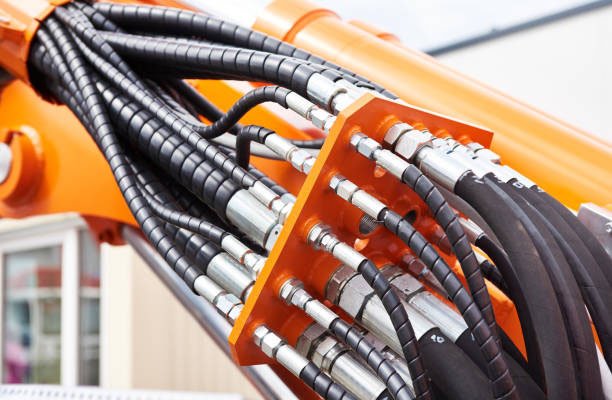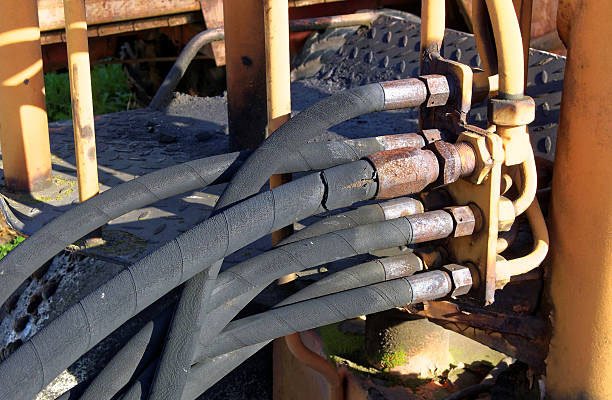Hydraulic fittings are a vital component of fluid power systems, ensuring the smooth transfer of fluids under high pressure. Surface treatment plays an essential role in enhancing their performance, durability, and aesthetic appeal. This comprehensive guide explores various types of surface treatments for hydraulic fittings and their unique benefits.
What Are Hydraulic Fittings?
Hydraulic fittings are connectors used in hydraulic systems to link hoses, pipes, and tubes. They serve as a conduit for hydraulic fluid, ensuring seamless fluid transfer under extreme conditions. Their durability and functionality depend heavily on their material composition and surface treatment.
Why Surface Treatment is Crucial for Hydraulic Fittings
Surface treatments go beyond mere aesthetics—they are a critical factor in protecting hydraulic fittings and ensuring your system operates seamlessly.
Key Reasons for Surface Treatments:
- Corrosion Protection:
Hydraulic systems are often exposed to moisture, oxygen, and harsh environments that lead to rust and corrosion. Surface treatments form a protective barrier, shielding the metal from these elements. - Durability Enhancement:
Treated surfaces resist wear and tear caused by friction, impact, or abrasive forces, extending the life of the fitting. - Improved Functionality:
Some coatings (like phosphate) reduce friction, making fittings easier to assemble or disassemble. Others, like nickel plating, provide a smoother, non-reactive surface ideal for chemical resistance. - Visual Appeal:
A well-coated fitting looks professional, which can be important for certain industries or applications where aesthetics matter. - Compliance with Standards:
Many industries require specific surface treatments to meet safety, durability, or environmental standards.
Types of Hydraulic Fittings Surface Treatment Types
1. Zinc Plating: The Affordable All-Rounder
Zinc plating is the go-to surface treatment for hydraulic fittings used in general-purpose applications. It involves applying a thin layer of zinc to the fitting via electroplating.
How It Works:
The fitting is dipped into a chemical solution, and an electric current causes zinc ions to adhere to the metal surface.
Advantages:
- Corrosion Resistance: Zinc acts as a sacrificial metal, corroding instead of the underlying steel.
- Cost-Effective: Among the most affordable surface treatments.
- Versatile Appearance: Available in silver (clear zinc) or yellow chromate finishes.
Drawbacks:
- Not suitable for highly corrosive environments (e.g., marine or industrial chemical exposure).
- Limited lifespan compared to thicker coatings like galvanization.
Best For:
- Hydraulic systems in mild to moderate environments, such as agriculture or light machinery.
2. Electroless Nickel Plating: The Premium Protector
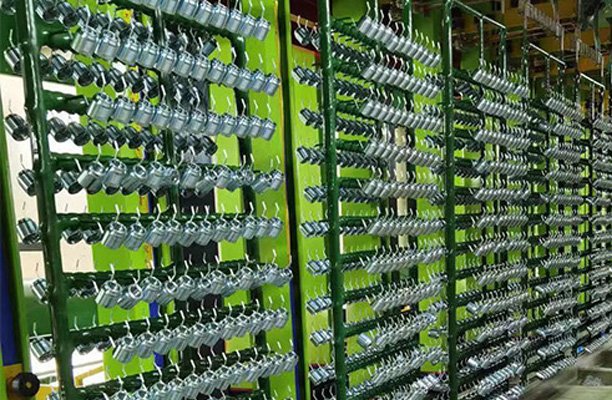
For industries that demand precision and high performance, electroless nickel plating delivers exceptional results. Unlike electroplating, this process uses a chemical reaction to evenly coat the fitting with a nickel-phosphorus alloy.
How It Works:
The fitting is immersed in a solution containing nickel salts and reducing agents. A chemical reaction deposits an even layer of nickel onto the surface, regardless of the part’s shape.
Advantages:
- Unparalleled Corrosion Resistance: Suitable for harsh environments like offshore, chemical processing, or extreme weather.
- Superior Hardness: Protects against abrasion and wear, making it ideal for high-stress applications.
- Perfect Coverage: Even coating on threads, recesses, and other intricate areas.
Drawbacks:
- Higher cost compared to zinc plating or phosphate coatings.
Best For:
- Applications involving chemical exposure, heavy loads, or high temperatures.
3. Galvanization: The Heavy-Duty Shield
Galvanization provides a thicker and more durable zinc coating compared to standard zinc plating. This process is ideal for large hydraulic fittings exposed to outdoor or marine environments.
How It Works:
The fitting is dipped into a bath of molten zinc, forming a thick, robust layer of zinc on the surface.
Advantages:
- Extreme Corrosion Protection: Perfect for outdoor applications where moisture and salt exposure are constant.
- Durable Coating: The thicker zinc layer can withstand impacts and physical damage.
Drawbacks:
- Thicker coating can interfere with the threads of hydraulic fittings, affecting performance.
- Less aesthetically pleasing than other coatings.
Best For:
- Outdoor, marine, and heavy-duty hydraulic systems.
4. Phosphate Coating (Parkerizing): The Friction Reducer
Phosphate coatings, often referred to as Parkerizing, create a thin layer of zinc or manganese phosphate on the fitting’s surface.
How It Works:
The fitting is treated with a chemical solution, which reacts with the surface to form a phosphate coating. This coating is often combined with an oil treatment for additional lubrication and protection.
Advantages:
- Friction Reduction: Ideal for fittings that need to be frequently assembled or adjusted.
- Corrosion Resistance: Moderate protection for low to medium exposure environments.
- Affordable: Cost-effective compared to more advanced coatings.
Drawbacks:
- Limited corrosion resistance compared to galvanization or nickel plating.
Best For:
- Industrial applications where friction and ease of assembly are critical.
5. Powder Coating: The Aesthetic Champion
Powder coating is a popular method for adding durability and vibrant color to hydraulic fittings. This treatment is more commonly used for its aesthetic appeal but offers decent protection in moderate environments.
How It Works:
A dry powder (made from polyester, epoxy, or acrylic) is electrostatically applied to the fitting. The coated fitting is then heated, causing the powder to melt and cure into a hard, protective layer.
Advantages:
- Customizable Colors: Perfect for branding or color-coding hydraulic systems.
- Scratch and Chip Resistance: Offers excellent durability against minor physical damage.
- Eco-Friendly: Contains no harmful solvents, making it environmentally friendly.
Drawbacks:
- Limited corrosion resistance compared to metallic coatings.
- Less suitable for extreme environments.
Best For:
- Hydraulic fittings where aesthetics matter, such as in consumer-facing products or displays.
6. Chrome Plating: The High-End Finish
Chrome plating provides a thin, shiny layer of chromium that enhances both the durability and appearance of hydraulic fittings.
How It Works:
The fitting is submerged in a solution containing chromium and is electroplated to create a thin yet durable layer.
Advantages:
- High Corrosion and Wear Resistance: Withstands harsh environments and physical impacts.
- Luxurious Appearance: Adds a professional, polished finish to the fitting.
Drawbacks:
- Higher cost compared to other treatments.
- Not suitable for applications requiring thick coatings.
Best For:
- High-end applications where appearance and durability are equally important.
How to Choose the Right Surface Treatment
Selecting the appropriate treatment depends on:
- Material Compatibility: Ensure the treatment aligns with the base material.
- Operating Conditions: Consider exposure to corrosion, temperature, and chemicals.
- Cost and Longevity: Balance initial cost against long-term durability.
- Regulatory Compliance: Adhere to environmental and safety standards.
Conclusion
Surface treatments are the unsung heroes that keep hydraulic fittings functional, durable, and efficient. From the affordable protection of zinc plating to the high-performance durability of electroless nickel, there’s a treatment for every need. Choosing the right one can save you time, money, and headaches in the long run.
FAQs
1. Why is surface treatment necessary for hydraulic fittings?
Surface treatment enhances durability, corrosion resistance, and overall performance.
2. What is the most durable surface treatment?
Galvanizing and nickel plating are among the most durable, offering high corrosion resistance.
3. Can anodizing be applied to all metals?
No, anodizing is mainly suitable for aluminum and its alloys.
4. How often should treated fittings be maintained?
Regular inspections and cleaning should be conducted every 3-6 months, depending on usage conditions.
5. Is powder coating environmentally friendly?
Yes, powder coating is a low-waste and non-toxic surface treatment.
6. What are the emerging trends in surface treatment technology?
Nano-coatings and smart coatings are leading the way in innovation, offering advanced protection and functionality.


